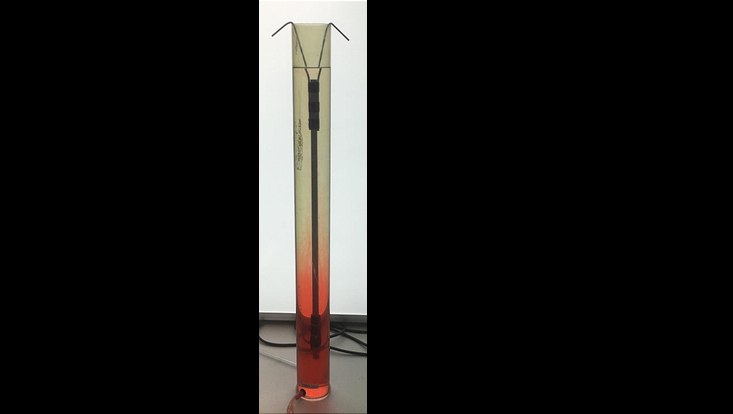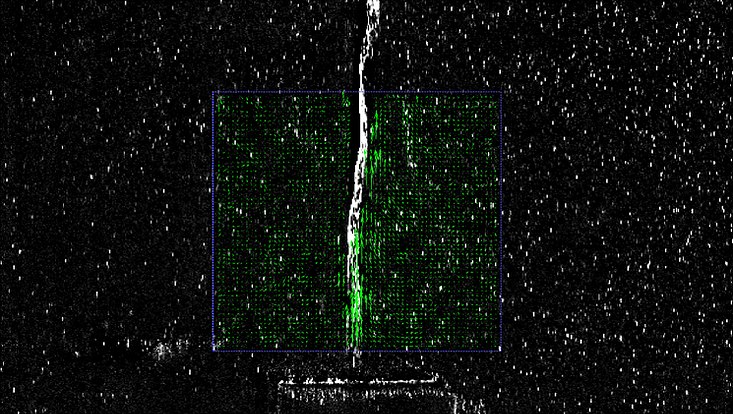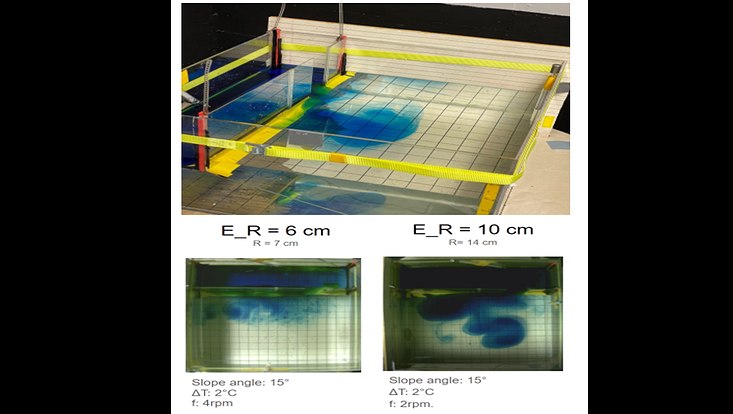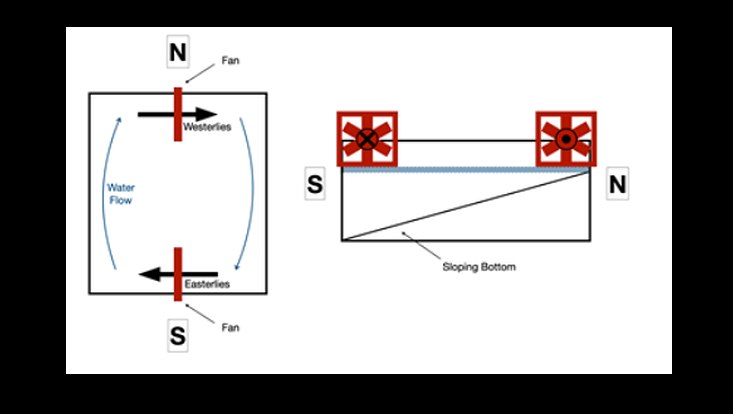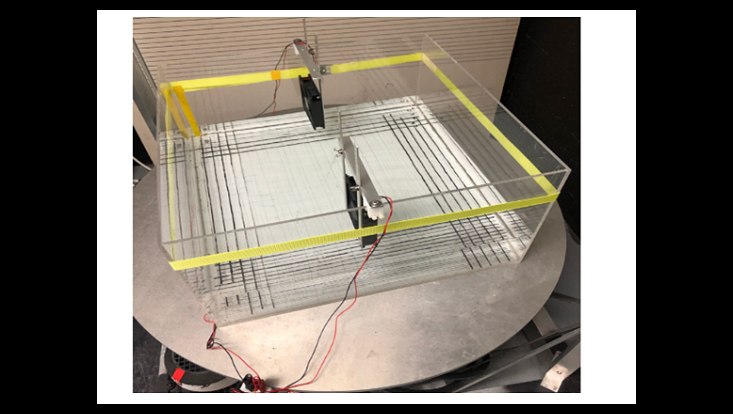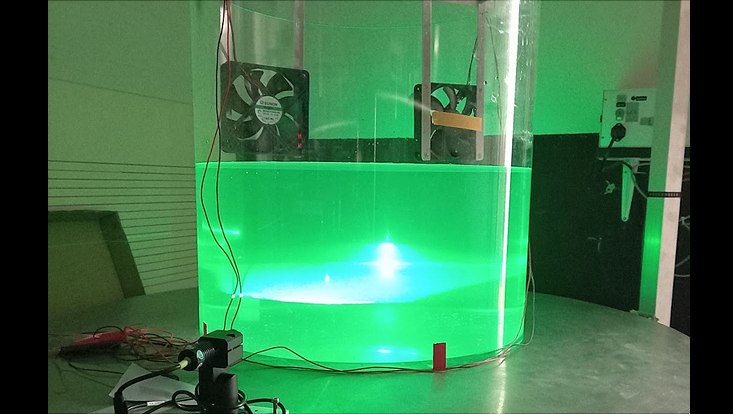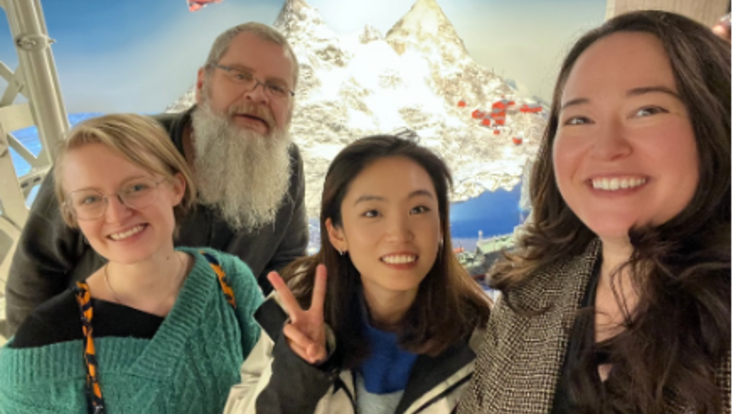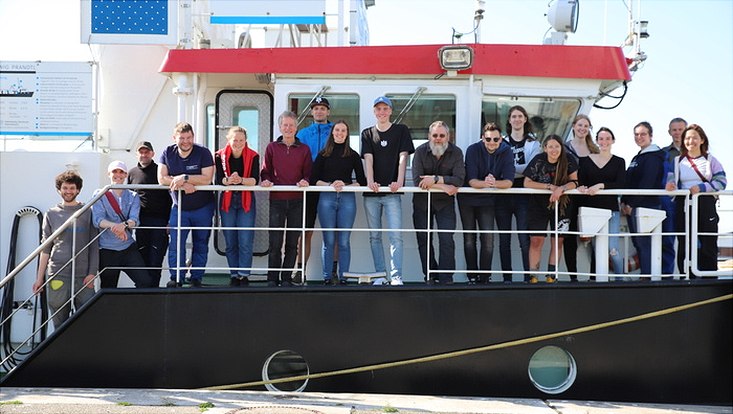Observing the ocean from the cellar of Geomatikum
27 August 2022, by Emelie Breunig and Rumeysa Yilmaz
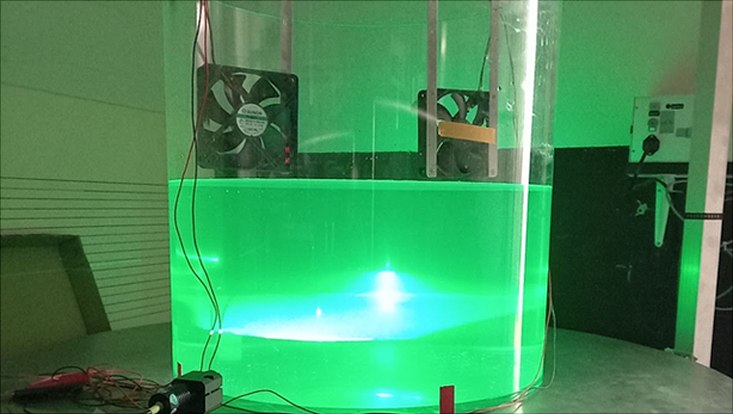
Photo: Proshonni Aziz
We, 20 students of the “Ocean & Climate Physics” MSc program, came up with five interesting projects within the course “Oceanic Processes & Observations” to investigate large- and small-scale processes in the ocean using both laboratory experiments as well as numeric model output.
With rising CO2 levels and slow political responses to it, the question arises: is it now time to think about technologies to actively take CO2 out of the atmosphere? One idea is to bring nutrient rich deep water up. This will boost phytoplankton growth and bind CO2 in the form of biological matter. Fascinated by this biological pump, two student’s groups set out to test its feasibility.
The best way to bring water from one place to another is a pipe. So why don't we bring up nutrient-rich water by installing floating pipes into the ocean? As cold and less saline water is sucked up, it warms and gets lighter than more saline water above it and an upwelling is created. We indeed observe an upwelling. Trying out different diameters ranging from 0.008 meters to 3 meters in the model, the one with the 1.5-meter diameter has the best ratio of upwelled water volume to material used for the pipe (Photo 1). This setup brings up more than 3000 m3 of water every second from a depth of 280 meters. However, to sequester the 2.8 Mio tons of carbon released every day, we would need to install 3.1 Mio of pipes.
Maybe we could instead amplify what is already there in the ocean. At the bottom of the ocean, hydrothermal vents supply vast amounts of heated water. By drilling close to the mid-ocean ridges, hydrothermal vents strong enough to upwell to the surface could be created artificially. With a vent of about 34 x 106 W, the upwelling already reaches the surface and brings up 33 x 106 m3 of water. By increasing the vent strength to 231 x 106 W, we need “only” 1000 drillings to sequester up to 46% of the global emissions every year. However, before we go ahead and start drilling holes or installing pipes, we must keep in mind that we are actively intervening with sensible biological systems!
Due to a crucial role in the meridional overturning circulation and in the ocean ventilation, the next group focuses on ocean overflows. Both in the laboratory and in the numerical model, we set up changing slope angles, temperature differences between ambient fluid and overflow, and the Coriolis force (Photo 3). The overflow creates eddies of varying sizes. The experiments show that the Coriolis force has the clearest impact on the average eddy size with a lower Coriolis force leading to larger eddy sizes.
The next group takes us to the western side of the world ocean basins. Western Boundary Currents are strong, persistent currents along the western boundaries of the ocean basins. They are among the strongest currents in the ocean and play a crucial role in transporting heat poleward. As global warming could lead to stronger trade winds, the question arises how this affects the western boundary currents. In the laboratory, fans simulate the trade winds by tracking particles across the tank so that the velocities can be estimated (Photos 4 and 5).
Next, we investigate Ekman pumping and suction by the Particle Image Velocimetry (PIV) Technology. This technique uses glass particles seeded into the water, which are made visible by a laser. By taking consecutive pictures, vertical velocities are measured (Photo 2). The experiment starts with cyclonic and anticyclonic currents in a rotating tank using fans to simulate wind stress on the surface. As the tank rotates, installing the PIV setup is tedious, but at the end the group manages and creates a guide for setup of the rotating PIV technique to pass down this knowledge to future students (Photo 6).
As a lot of Covid-19 restrictions were still in place, we are grateful to be the first group doing the experiments in the laboratory in the cellar of Geomatikum again. As most of us started our MSc studies during the pandemic times, this was a wonderful opportunity to finally get to know other students from the semester. We want to thank Prof. Dr. Carsten Eden and Dr. Alexa Griesel and Andreas Welsch for making this possible and for providing us with their continuous support and patient consultations.
About the authors
Emelie Breunig and Rumeysa Yilmaz are both Master students in the study program “Ocean & Climate Physics”.

